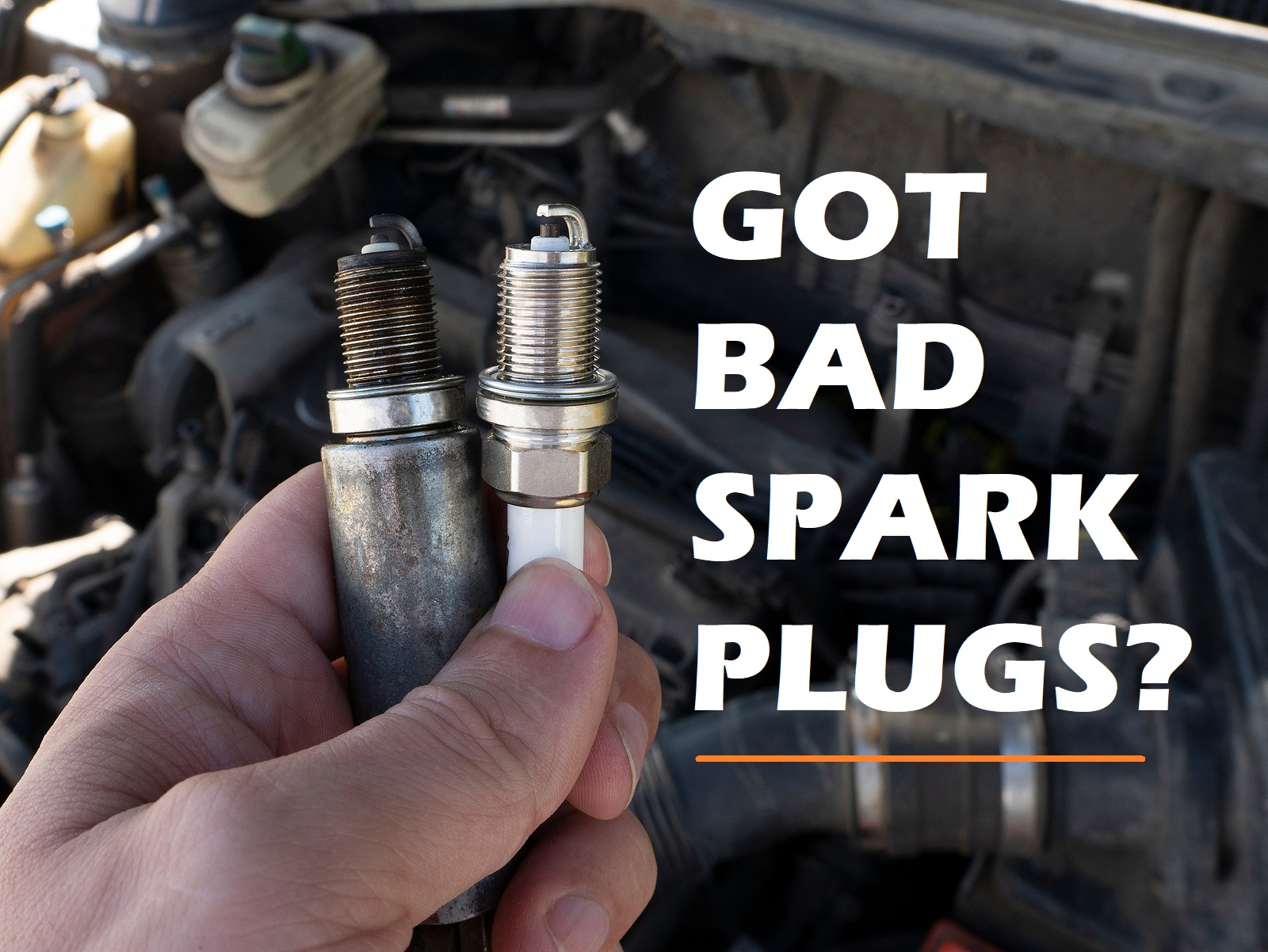How to Know When Spark Plugs Need to Be Replaced
You’ll know it’s time to replace spark plugs when your car experiences misfires or rough idling. Worn out spark plugs can decrease engine performance and fuel efficiency, making it important to monitor their condition regularly.
Ignoring the signs of worn spark plugs can lead to more serious engine issues and costly repairs. By paying attention to symptoms like engine hesitation, poor acceleration, and increased fuel consumption, you can prevent potential problems and maintain your vehicle’s optimal performance.
Regular maintenance and timely replacement of spark plugs will ensure your engine runs smoothly and efficiently, improving overall driving experience and extending the lifespan of your vehicle.

Credit: www.reddit.com
Signs Of Faulty Spark Plugs
One of the essential components of your car’s engine, spark plugs play a crucial role in the ignition process. Over time, these small but vital parts can wear out, leading to a range of issues that can impact the performance and fuel efficiency of your vehicle. Recognizing the signs of faulty spark plugs is crucial in maintaining your car’s smooth operation and preventing more significant problems down the road.
Lack Of Power And Engine Misfires
A lack of power and engine misfires are common symptoms of worn-out or faulty spark plugs. If you notice a decrease in your vehicle’s acceleration or experience sudden jerking or jolting while driving, it may indicate that the spark plugs are no longer firing effectively. This can result in inefficient combustion, leading to a loss of power and a rough-running engine.
Difficulty Starting The Engine
Difficulty starting the engine, especially in colder weather, can be a sign that your spark plugs are failing. When spark plugs deteriorate, they may not generate a strong enough spark to ignite the fuel mixture in the engine, causing starting problems. If your car is taking longer than usual to start, or if you hear a prolonged cranking noise, worn spark plugs could be the culprit.
Decreased Fuel Efficiency
One of the most noticeable signs of faulty spark plugs is decreased fuel efficiency. When spark plugs are worn out, they can’t ignite the fuel as effectively, leading to incomplete combustion. This inefficiency can cause your car to consume more fuel than usual, resulting in decreased miles per gallon and increased trips to the gas station.
Visual Inspection
One way to determine if spark plugs need replacing is through visual inspection. Look for worn, damaged, or corroded electrodes, as well as excessive carbon buildup, which can all indicate the need for replacement. Regularly checking spark plugs can help ensure optimal engine performance.
Check For Oil Deposits Or Carbon Build-up
During a visual inspection of spark plugs, look for any oil deposits or carbon build-up. These signs indicate potential issues that need attention.
Inspect For Cracked Or Worn Electrodes
Examine the spark plug electrodes for any signs of cracks or wear. Ensure each electrode is in good condition for optimal performance.
Mileage
If your car experiences a decrease in mileage, it could be a sign that the spark plugs need to be replaced. A sudden drop in fuel efficiency could indicate that the spark plugs are no longer functioning optimally and are affecting the overall performance of the engine.
Keeping an eye on mileage can help you determine when it’s time for a spark plug replacement.
Refer to the manufacturer’s recommendationsIf your vehicle has reached specific mileage milestones, it may be time to replace the spark plugs. Regularly replacing spark plugs can prevent engine issues and maintain optimal performance.
Refer To The Manufacturer’s Recommendations
- Consult your vehicle’s manual for recommended spark plug replacement intervals.
- Manufacturers usually provide guidelines based on mileage for optimal performance.
- Following these recommendations can help prevent costly repairs.
Consider The Driving Conditions
- City driving or stop-and-go traffic can reduce spark plug lifespan.
- Highway driving may allow spark plugs to last longer due to consistent speed.
- Harsh conditions like extreme temperatures or dusty roads can affect spark plug longevity.

Credit: mechanics.stackexchange.com
Rough Idle
One of the common signs indicating that your spark plugs may need to be replaced is a rough idle. When your vehicle is idling, and the engine is running unevenly or hesitating, it could be a result of worn-out spark plugs causing misfires.
Inspect The Spark Plugs For Wear And Tear
Regularly inspecting the spark plugs is essential to ensure they are in good condition. Over time, spark plugs can become worn and ineffective due to the high temperatures and constant sparking within the engine. Look for signs of wear, such as eroded electrodes and excessive carbon buildup.
Regular Maintenance
Regular maintenance is essential to keep your vehicle running smoothly and prevent any major issues. One crucial aspect of regular maintenance is checking and replacing spark plugs. Ignoring this simple task can lead to poor engine performance, reduced fuel efficiency, and even engine misfires. Therefore, it is important to follow the recommended maintenance schedule and replace spark plugs proactively. This article will guide you on when to replace your spark plugs and why it is crucial for your vehicle’s overall performance.
Follow The Recommended Maintenance Schedule
Following the recommended maintenance schedule for your vehicle is essential to ensure it continues to operate at its best. Each manufacturer provides a specific timeframe for when certain components, including spark plugs, need to be replaced. Typically, this schedule is based on the mileage covered or the age of the vehicle.
It is crucial to adhere to this schedule as it takes into account the average lifespan of spark plugs. Over time, these small but mighty components can become worn down, resulting in weak spark generation and subpar combustion. By replacing the spark plugs when recommended, you can ensure that your engine continues to operate efficiently.
Replace Spark Plugs Proactively
Waiting for obvious signs of spark plug failure, such as a rough idle or difficulty starting your engine, is not a wise approach. Instead, it is better to proactively replace your spark plugs before they deteriorate to a point where they negatively impact your vehicle’s performance.
Proactively replacing spark plugs allows you to maintain optimal engine efficiency. New spark plugs promote better fuel combustion, leading to improved fuel economy and reduced emissions. Additionally, they enable smoother engine operation, preventing misfires and ensuring a consistently reliable performance.
By following the recommended maintenance schedule and replacing spark plugs proactively, you can ensure that your vehicle’s engine runs smoothly and efficiently. Regular maintenance is the key to a longer lifespan for your vehicle, and paying attention to spark plug replacement is an essential part of that maintenance routine.

Credit: www.autorepairindy.com
Frequently Asked Questions On How To Know When Spark Plugs Need To Be Replaced
What Are Symptoms Of Bad Spark Plugs?
Symptoms of bad spark plugs include rough idling, poor acceleration, decreased fuel efficiency, engine misfires, and difficulty starting.
How Do I Know If My Spark Plugs Need Changing?
Check for signs like rough idling, misfiring engine, poor acceleration, and decreased fuel efficiency. Visual inspection can reveal worn or damaged plugs.
How Often Do You Need To Replace Spark Plugs?
You should replace spark plugs every 30,000 miles for older vehicles and every 60,000 miles for newer ones to maintain efficient engine performance and fuel economy. Regular inspection is also recommended.
What Happens If You Don’t Change Your Spark Plugs?
Not changing your spark plugs can lead to poor engine performance, reduced fuel efficiency, difficulty starting the engine, and potential damage to other engine components. It is important to regularly replace spark plugs to ensure optimal engine performance and prevent costly repairs.
How Often Should I Replace Spark Plugs?
Spark plugs should generally be replaced every 30,000 to 50,000 miles or as recommended by your vehicle’s manufacturer.
What Are The Signs Of Worn-out Spark Plugs?
Signs of worn-out spark plugs include difficulty starting your vehicle, rough idling, poor acceleration, and decreased fuel efficiency.
Can I Replace Spark Plugs Myself?
Yes, you can replace spark plugs yourself by following the instructions in your vehicle’s manual and using the proper tools.
Conclusion
Ensuring your vehicle’s spark plugs are in top condition is crucial for optimal performance. By recognizing the signs of worn-out spark plugs, like misfiring and decreased fuel efficiency, you can proactively maintain your car’s engine. Regularly inspecting and replacing spark plugs as needed will help you avoid costly repairs and keep your vehicle running smoothly.
